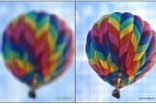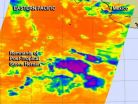(Press-News.org) The best way to cure most cases of cancer is to surgically remove the tumor. The Achilles heel of this approach, however, is that the surgeon may fail to extract the entire tumor, leading to a local recurrence.
With a new technique, researchers at the University of Pennsylvania have established a new strategy to help surgeons see the entire tumor in the patient, increasing the likelihood of a positive outcome. This approach relies on an injectable dye that accumulates in cancerous tissues much more so than normal tissues. When the surgeon shines an infrared light on the cancer, it glows, allowing the surgeon to remove the entire malignancy.
"Surgeons have had two things that tell where a cancer is during surgery: their eyes and their hands," said David Holt, first author on the study and professor of surgery in Penn's School of Veterinary Medicine. "This technique is offering surgeons another tool, to light tumors up during surgery."
Holt collaborated with a team from Penn's Perelman School of Medicine led by Sunil Singhal, an assistant professor of surgery. Their paper appears in the journal PLOS ONE.
Between 20 and 50 percent of cancer patients who undergo surgery end up experiencing a local recurrence of their cancer, indicating that the surgeon failed to extract all of the diseased tissue from the site. Identifying the margins of a tumor can be difficult to do during a procedure, and typically surgeons have had to do this by simply looking at the tumor and feeling for differences with their fingers.
Seeking an alternative, Holt, Singhal and colleagues turned to near-infrared, or NIR, imaging. They chose to test the only Food and Drug Administration-approved contrast agent for NIR, a dye called indocyanine green, or ICG, that fluoresces a bright green under NIR light. ICG concentrates in tumor tissue more than normal tissue because the blood vessels of tumors have so-called "leaky" walls from growing quickly.
"Since 1958 when ICG was initially FDA approved, it has been used to examine tissue perfusion and clearance studies," Singhal said. "However, our group has been experimenting with new strategies to use ICG to solve a classic problem in surgical oncology: preventing local recurrences. Our work uses an old dye in a new way."
To see if visualizing ICG under NIR could help them define cancerous from non-cancerous tissues, the Penn-led team first tested the approach in mice. They administered ICG to mice with a type of lung cancer and found that they could use NIR to distinguish tumors from normal lung tissue as early as 15 days after the mice acquired cancer. These tumors were visible to the human eye by 24 days.
Next the researchers evaluated the technique in eight client-owned dogs, of various breeds and sizes, that had naturally occurring lung cancer and were brought to Penn Vet for surgery. They received ICG intravenously a day before surgery, then surgeons used NIR during the procedure to try to visualize the tumor and distinguish it from normal tissue.
"It worked," Holt said, the tumors fluorescing clearly enough to permit the surgeon to rapidly distinguish the cancer during surgery. "And because it worked in a spontaneous large animal model, we were able to get approval to start trying it in people."
A human clinical trial was the final step. Five patients with cancer in their lungs or chest participated in the pilot study at the Hospital of the University of Pennsylvania. Each received an injection of ICG prior to surgery. During the procedure, surgeons removed the tumors, which were then inspected using NIR imaging and biopsied.
All of the tumors strongly fluoresced under the NIR light, confirming that the technique worked in human cancers.
In four of the patients, the surgeon could easily tell tumor from non-tumor by sight and by feel. In a fifth patient, however, though a CT and PET scan indicated that the tumor was a solitary mass, NIR imaging revealed glowing areas in what were thought to be healthy parts of the lung.
"It turns out he had diffuse microscopic cancer in multiple areas of the lung," Holt said. "We might have otherwise called this Stage I, local disease, and the cancer would have progressed. But because of the imaging and subsequent biospy, he underwent chemotherapy and survived."
Some other research teams have begun investigating NIR for other applications in cancer surgery, but this is the first time a group has taken the approach from a mouse model to a large animal model of spontaneous disease and all the way to human clinical trials.
One drawback of the technique is that ICG also absorbs into inflamed tissue. So in some patients that had inflamed tissues around their tumors, it was difficult or impossible to tell apart cancer from from inflamed tissue. The Penn researchers are working to identify an alternative targeted contrast agent that is specific to a tumor cell marker to avoid this problem, Holt said.
INFORMATION:
In addition to Holt and Singhal, the authors on the paper included Penn Medicine's Olugbenga Okusanya, Ryan Judy, Ollin Venegas, Jack Jiang, Elizabeth DeJesus, Evgeniy Eruslanov, Jon Quatromoni, Pratik Bhojnagarwala, Charuhas Deshpande and Steven Albelda and Emory University's Shuming Nie.
The work was supported by the American Surgical Association and the National Institutes of Health.
Penn team makes cancer glow to improve surgical outcomes
2014-07-29
ELSE PRESS RELEASES FROM THIS DATE:
Huge waves measured for first time in Arctic Ocean
2014-07-29
As the climate warms and sea ice retreats, the North is changing. An ice-covered expanse now has a season of increasingly open water which is predicted to extend across the whole Arctic Ocean before the middle of this century. Storms thus have the potential to create Arctic swell – huge waves that could add a new and unpredictable element to the region.
A University of Washington researcher made the first study of waves in the middle of the Arctic Ocean, and detected house-sized waves during a September 2012 storm. The results were recently published in Geophysical Research ...
Underwater elephants
2014-07-29
In the high-tech world of science, researchers sometimes need to get back to basics. UC Santa Barbara's Douglas McCauley did just that to study the impacts of the bumphead parrotfish (Bolbometopon muricatum) on coral reef ecosystems at two remote locations in the central Pacific Ocean.
Using direct observation, animal tracking and computer simulation, McCauley, an assistant professor in the Department of Ecology, Evolution and Marine Biology, and his colleagues sought to understand whether the world's largest parrotfish is necessary for positively shaping the structure ...
Vision-correcting display makes reading glasses so yesterday
2014-07-29
BERKELEY — What if computer screens had glasses instead of the people staring at the monitors? That concept is not too far afield from technology being developed by computer and vision scientists at the University of California, Berkeley.
The researchers are developing computer algorithms to compensate for an individual's visual impairment, and creating vision-correcting displays that enable users to see text and images clearly without wearing eyeglasses or contact lenses. The technology could potentially help hundreds of millions of people who currently need corrective ...
Researchers take steps toward development of a vaccine against tick-transmitted disease
2014-07-29
Virginia Commonwealth University School of Medicine researchers have made an important advancement toward developing a vaccine against the debilitating and potentially deadly tick-transmitted disease, human granulocytic anaplasmosis (HGA).
During the past several years, experts have seen a steady rise in the incidence of human infections caused by tick-transmitted bacterial pathogens — making the need for a vaccine critical. Successful vaccine development hinges on knowing what to target to prevent disease, and the VCU team has identified three such proteins on the surface ...
Brainwaves can predict audience reaction for television programming
2014-07-29
Media and marketing experts have long sought a reliable method of forecasting responses from the general population to future products and messages. According to a study conducted at the City College of New York (CCNY) in partnership with Georgia Tech, it appears that the brain responses of just a few individuals are a remarkably strong predictor.
By analyzing the brainwaves of 16 individuals as they watched mainstream television content, researchers were able to accurately predict the preferences of large TV audiences, up to 90 percent in the case of Super Bowl commercials. ...
Socialization relative strength in fragile X longitudinal study
2014-07-29
Standard scores measuring "adaptive behavior" in boys with fragile X syndrome tend to decline during childhood and adolescence, the largest longitudinal study of the inherited disorder to date has found.
Adaptive behavior covers a range of everyday social and practical skills, including communication, socialization, and completing tasks of daily living such as getting dressed. In this study, socialization emerged as a relative strength in boys with fragile X, in that it did not decline as much as the other two domains of adaptive behavior measured: communication and daily ...
Brand-specific television alcohol ads predict brand consumption among underage youth
2014-07-29
Underage drinkers are three times more likely to drink alcohol brands that advertise on television programs they watch compared to other alcohol brands, providing new and compelling evidence of a strong association between alcohol advertising and youth drinking behavior.
This is the conclusion of a new study from the Center on Alcohol Marketing and Youth (CAMY) at the Johns Hopkins Bloomberg School of Public Health and the Boston University School of Public Health that examined whether exposure to brand-specific alcohol advertising on 20 television shows popular with ...
$15 billion annual public funding system for doctor training needs overhaul, says IOM
2014-07-29
WASHINGTON -- The U.S. should significantly reform the federal system for financing physician training and residency programs to ensure that the public's $15 billion annual investment is producing the doctors that the nation needs, says a new report by the Institute of Medicine. Current financing -- provided largely through Medicare -- requires little accountability, allocates funds independent of workforce needs or educational outcomes, and offers insufficient opportunities to train physicians in the health care settings used by most Americans, the report says.
All ...
A new way to make microstructured surfaces
2014-07-29
A team of researchers has created a new way of manufacturing microstructured surfaces that have novel three-dimensional textures. These surfaces, made by self-assembly of carbon nanotubes, could exhibit a variety of useful properties — including controllable mechanical stiffness and strength, or the ability to repel water in a certain direction.
"We have demonstrated that mechanical forces can be used to direct nanostructures to form complex three-dimensional microstructures, and that we can independently control … the mechanical properties of the microstructures," says ...
NASA sees warmer cloud tops as Tropical Storm Hernan degenerates
2014-07-29
Tropical Storm Hernan degenerated into a remnant low pressure area on July 29. Infrared imagery from NASA's Aqua satellite revealed cloud tops were warming as the storm weakened.
The Atmospheric Infrared Sounder or AIRS instrument aboard Aqua gathered infrared data on a quickly weakening Hernan on July 29 at 5:11 a.m. EDT. The data was then made into a false-colored image at NASA's Jet Propulsion Laboratory in Pasadena, California. The AIRS image showed small, fragmented areas of a few powerful thunderstorms with high, cold cloud tops in Tropical Storm Hernan as it continued ...



